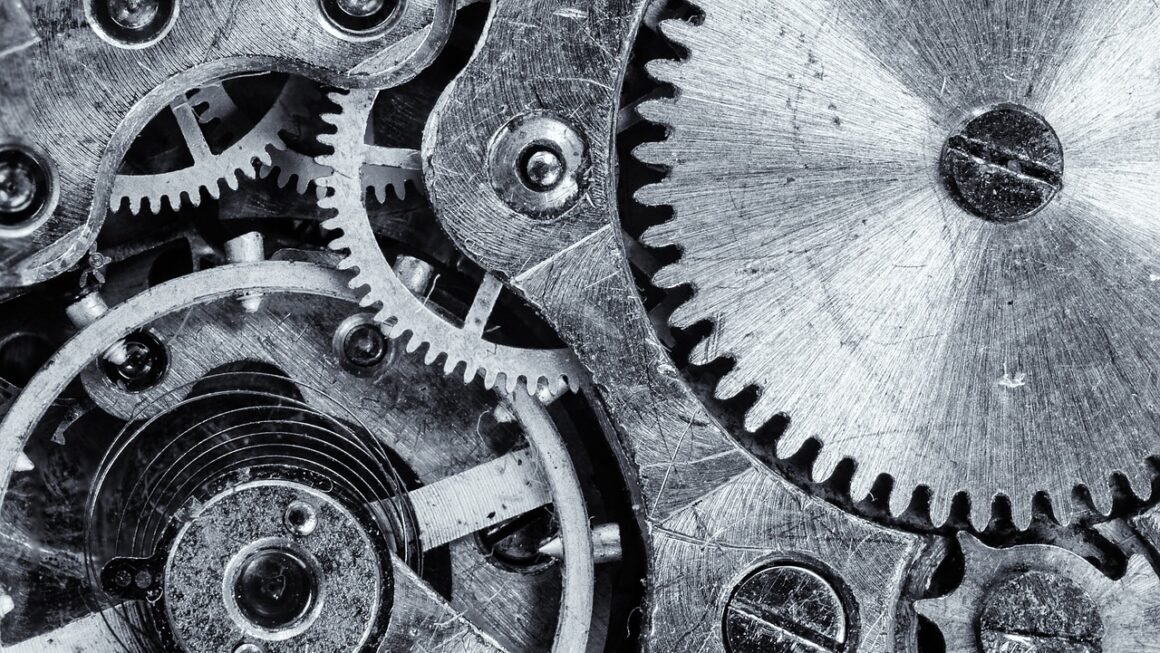Drones, once a futuristic fantasy relegated to science fiction, are now a readily available technology reshaping industries and hobbies alike. From aerial photography and package delivery to search and rescue operations and agricultural surveys, unmanned aerial vehicles (UAVs) are proving to be incredibly versatile tools. This article delves into the world of drones, exploring their capabilities, applications, regulations, and what the future holds for this exciting technology.
Understanding Drones: A Comprehensive Overview
What is a Drone?
A drone, technically known as an Unmanned Aerial Vehicle (UAV), is an aircraft without a human pilot on board. They are remotely controlled, either by a human operator on the ground or autonomously using pre-programmed flight plans. Drones are powered by batteries or fuel and come in various shapes and sizes, each designed for specific tasks.
Key Components of a Drone
Drones consist of several essential components that work together to enable flight and functionality:
- Airframe: The structural body of the drone, usually made of lightweight yet durable materials like carbon fiber or plastic.
- Motors and Propellers: These provide the thrust necessary for takeoff and flight. The number of motors can vary (quadcopters are common with four motors).
- Battery: Powers the motors, flight controller, and other electronic components. Battery life is a crucial factor influencing flight time.
- Flight Controller: The “brain” of the drone, responsible for stability, navigation, and executing commands. It integrates data from various sensors.
- GPS: Enables autonomous flight, waypoint navigation, and return-to-home functionality.
- Camera (Optional): Many drones are equipped with cameras for capturing photos and videos. Image quality ranges from standard definition to professional-grade 4K and beyond.
- Sensors: Various sensors, including accelerometers, gyroscopes, and barometers, help the flight controller maintain stability and altitude.
- Communication System: Allows the operator to control the drone and receive telemetry data, such as altitude, speed, and battery life.
Types of Drones
Drones are categorized based on their design, size, and capabilities:
- Multi-rotor Drones: (e.g., Quadcopters, Hexacopters, Octocopters) Offer stability and maneuverability, ideal for photography and videography.
- Fixed-wing Drones: More efficient for covering large areas and longer flight times, commonly used in agriculture and surveying.
- Single-rotor Drones: Similar to helicopters, often used for heavy lifting and specialized applications.
- Hybrid VTOL Drones: Combine the vertical takeoff and landing (VTOL) capabilities of multi-rotor drones with the efficiency of fixed-wing drones.
The Expanding Applications of Drone Technology
Drones are revolutionizing numerous industries, offering efficiency, cost-effectiveness, and enhanced data collection capabilities.
Aerial Photography and Videography
- Real Estate: Capturing stunning aerial views of properties to attract potential buyers. Example: Real estate agents use drones to showcase large estates or properties with unique landscapes.
- Filmmaking: Offering dynamic and unique perspectives for movies, documentaries, and commercials. Example: Film crews use drones for sweeping landscape shots or capturing action sequences from above.
- Events: Providing aerial coverage of concerts, festivals, and sporting events. Example: Sports broadcasters use drones to provide live aerial footage of games and events.
Inspection and Maintenance
- Infrastructure: Inspecting bridges, power lines, and cell towers for damage or wear and tear. Example: Utility companies use drones to inspect power lines for corrosion, damage, or vegetation encroachment.
- Construction: Monitoring progress, inspecting buildings, and ensuring safety on construction sites. Example: Construction managers use drones to track project progress, identify safety hazards, and inspect hard-to-reach areas.
- Renewable Energy: Inspecting wind turbines and solar panels for damage and efficiency. Example: Wind farm operators use drones to inspect turbine blades for cracks, erosion, or other damage.
Agriculture
- Crop Monitoring: Assessing crop health, detecting diseases, and optimizing irrigation. Example: Farmers use drones equipped with multispectral cameras to assess crop health, identify areas needing irrigation, and monitor fertilizer application.
- Precision Agriculture: Applying pesticides and fertilizers with pinpoint accuracy, reducing waste and environmental impact. Example: Farmers use drones to precisely spray pesticides on affected areas, reducing chemical runoff and minimizing environmental impact.
- Livestock Management: Monitoring herds, tracking movement, and identifying sick or injured animals. Example: Ranchers use drones to monitor livestock herds, track their movement, and quickly locate stray or injured animals.
Delivery and Logistics
- Package Delivery: Streamlining last-mile delivery services, particularly in urban and remote areas. Companies like Amazon and Google are actively testing drone delivery systems.
- Medical Supplies: Delivering essential medical supplies, such as medications and blood samples, to remote or inaccessible locations. Example: In Rwanda, drones are used to deliver blood supplies to remote clinics, saving lives and improving healthcare access.
- Emergency Response: Delivering food, water, and supplies to disaster-stricken areas. Example: After natural disasters, drones can be used to deliver emergency supplies to survivors in hard-to-reach areas.
Search and Rescue
- Locating Missing Persons: Using thermal cameras to detect heat signatures and locate missing individuals in challenging terrain. Example: Search and rescue teams use drones equipped with thermal cameras to locate missing hikers or lost individuals in remote areas.
- Assessing Disaster Zones: Providing real-time aerial imagery to assess damage and coordinate rescue efforts. Example: After earthquakes or floods, drones can be deployed to assess damage, identify survivors, and coordinate rescue efforts.
Navigating the Regulations and Legal Landscape
Operating drones safely and legally requires understanding and adhering to the regulations set by aviation authorities.
FAA Regulations in the United States
The Federal Aviation Administration (FAA) governs drone operations in the United States. Key regulations include:
- Part 107 Certification: Required for commercial drone operations. Passing the FAA’s Remote Pilot Knowledge Test grants this certification.
- Registration: All drones weighing between 0.55 lbs (250 grams) and 55 lbs must be registered with the FAA.
- Operational Restrictions: These include restrictions on flying over people, at night (unless with a waiver), and within controlled airspace without authorization.
- Visual Line of Sight (VLOS): The drone must be kept within the operator’s visual line of sight at all times, unless operating under specific waivers.
- Altitude Limits: Drones cannot be flown higher than 400 feet above ground level (AGL).
- Example: A real estate agent wanting to use a drone to photograph properties for their listings would need to obtain Part 107 certification from the FAA. They would also need to adhere to all operational restrictions, such as avoiding flying over people and keeping the drone within their visual line of sight.
Global Drone Regulations
Drone regulations vary significantly from country to country. It’s crucial to research and comply with the specific regulations of the region where you plan to operate. Some key considerations include:
- Europe (EASA): The European Union Aviation Safety Agency (EASA) sets harmonized rules for drone operations across EU member states.
- Canada (Transport Canada): Transport Canada regulates drone operations in Canada, with requirements for registration, certification, and operational restrictions.
- Australia (CASA): The Civil Aviation Safety Authority (CASA) regulates drone operations in Australia, with similar requirements to the FAA and EASA.
- Tip: Before traveling with a drone, research the drone regulations of your destination country and any transit countries.
Privacy Considerations
Drone operators must be mindful of privacy concerns when using drones, especially in residential areas.
- Respect Privacy: Avoid flying over private property without permission and refrain from recording individuals without their knowledge or consent.
- Local Laws: Be aware of local laws and ordinances regarding drone use and privacy.
- Ethical Practices: Adopt ethical practices that respect the privacy and property rights of others.
The Future of Drone Technology: Innovations and Trends
The drone industry is rapidly evolving, with continuous advancements in technology and expanding applications.
Artificial Intelligence (AI) and Autonomy
- Autonomous Flight: AI-powered drones are becoming increasingly capable of autonomous flight, enabling them to perform complex tasks without human intervention. Example: Drones equipped with AI can autonomously inspect bridges, identify defects, and generate detailed reports.
- Object Recognition: AI algorithms enable drones to recognize and track objects, improving their ability to perform tasks such as package delivery and search and rescue. Example: Drones can be trained to recognize specific objects, such as packages or survivors, and autonomously navigate to their location.
Enhanced Sensors and Payloads
- Advanced Cameras: Drones are being equipped with increasingly sophisticated cameras, including thermal, multispectral, and hyperspectral sensors. Example: Drones equipped with hyperspectral cameras can analyze the chemical composition of crops, providing valuable insights for precision agriculture.
- Lidar Technology: Lidar (Light Detection and Ranging) technology enables drones to create detailed 3D maps of the environment. Example: Drones equipped with lidar can be used to create high-resolution 3D models of terrain, buildings, and other structures.
Drone Traffic Management (UTM)
- UTM Systems: Developing UTM systems is essential for managing the increasing number of drones operating in the airspace. Example: UTM systems can provide real-time information on drone traffic, enabling safe and efficient operations in urban areas.
- Integration with Air Traffic Control: Integrating UTM systems with existing air traffic control systems is crucial for ensuring the safe and efficient use of airspace. Example: UTM systems can communicate with air traffic control systems to prevent collisions and manage drone traffic in controlled airspace.
Drone Delivery Networks
- Expanding Delivery Services: Drone delivery services are expected to expand significantly in the coming years, transforming logistics and e-commerce. Example: Companies like Amazon and Google are investing heavily in drone delivery technology and infrastructure.
- Infrastructure Development: Building the necessary infrastructure, such as drone ports and charging stations, is essential for supporting drone delivery networks. Example: Drone ports can serve as hubs for drone delivery operations, providing charging, maintenance, and package handling facilities.
Conclusion
Drones have evolved from niche gadgets to powerful tools with a wide range of applications. From photography and videography to infrastructure inspection and delivery services, drones are transforming industries and creating new opportunities. Understanding the technology, regulations, and future trends is essential for anyone looking to leverage the potential of drones. As the technology continues to advance, we can expect even more innovative applications and transformative impacts on our world. By staying informed and adhering to safety guidelines, we can harness the power of drones responsibly and ethically.



